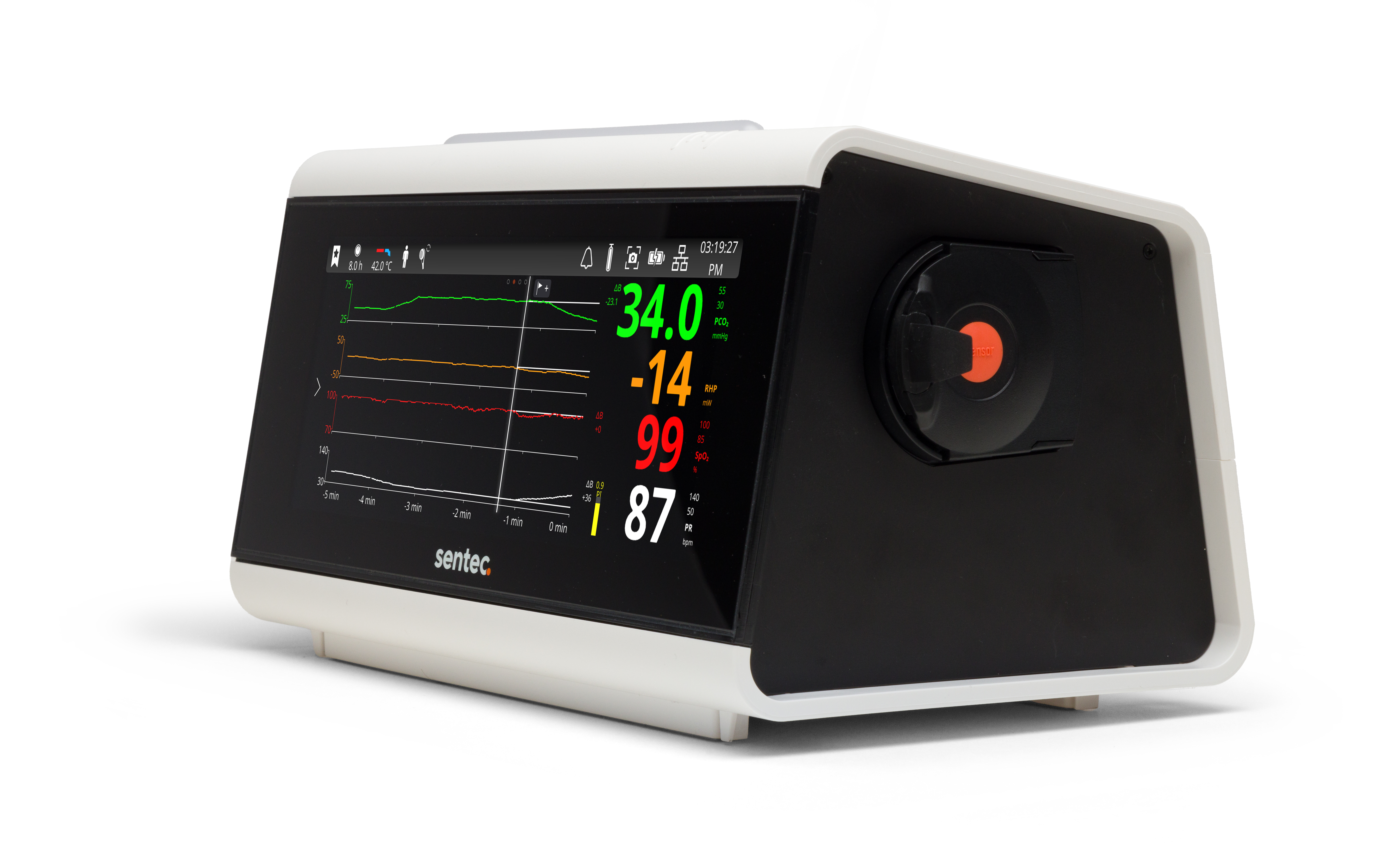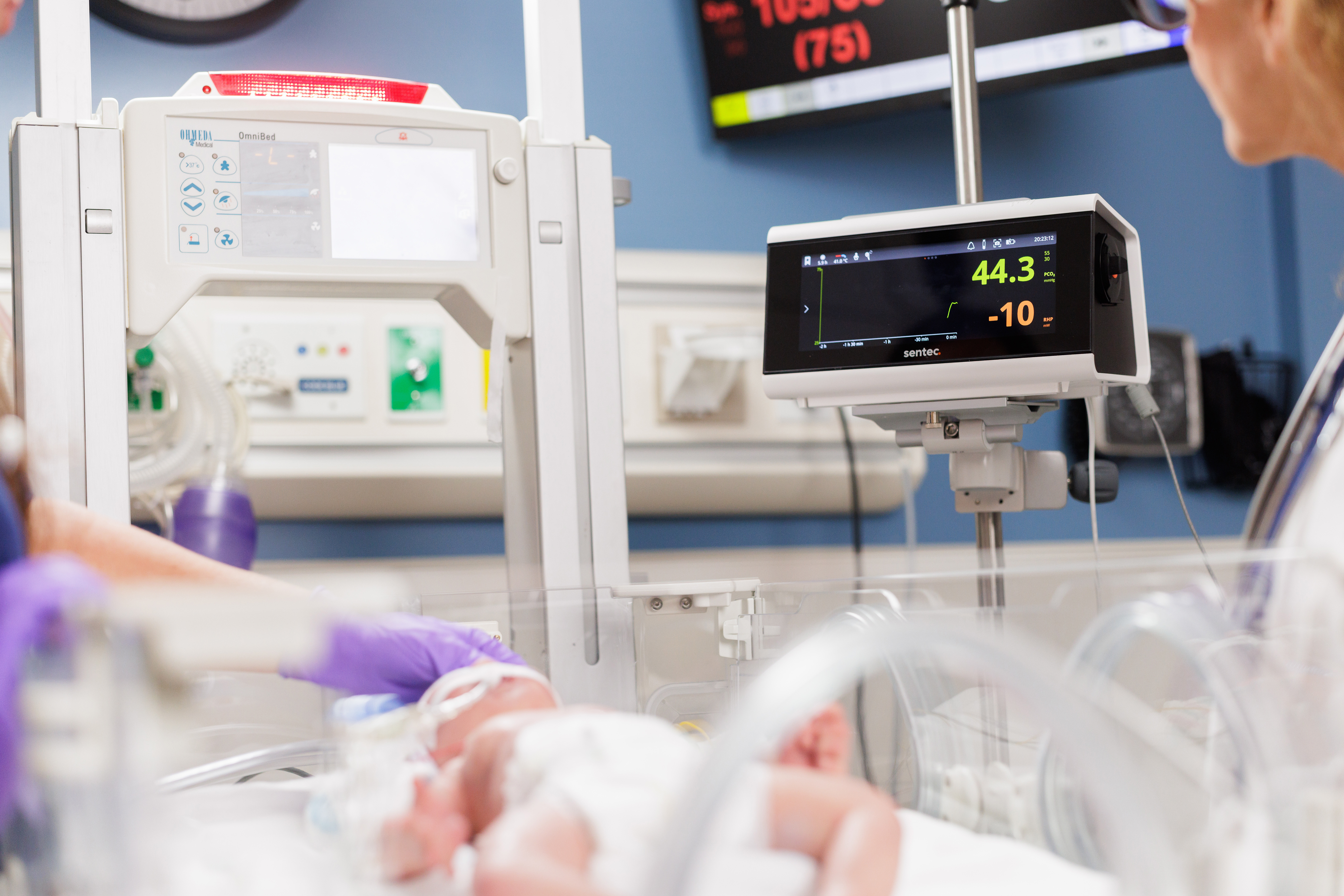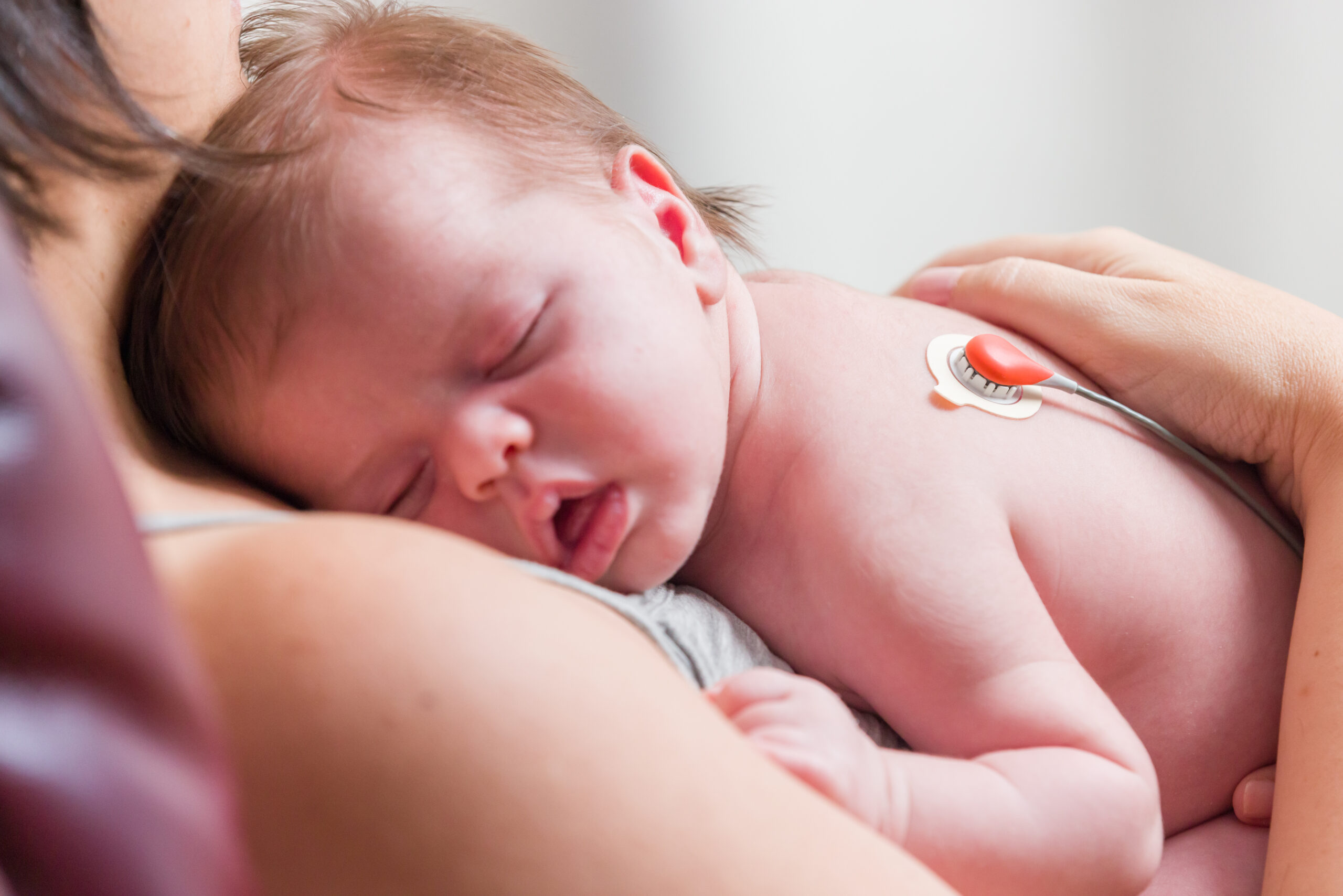Ihr Atmungstherapeuten-Team ist im gesamten Krankenhaus im Einsatz – vom Kreisssaal bis zur Intensivstation. Ihre Geräte sollten das auch sein.
Das transkutane Überwachungssystem von Sentec ermöglicht eine kontinuierliche und genaue Überwachung von CO2-Werten und -Trends. Wo auch immer Ihr Team als Nächstes im Einsatz ist – die transkutane Überwachung von Sentec kann Sie dabei begleiten.
Der neue tCOM+
Der tCOM+ bietet eine kontinuierliche Überwachung von tcPCO2, SpO2 und PR (sowie tcPO2 bei Verwendung des OxiVenT™-Sensors) in einem neuen, eleganten Design. Der tCOM+ enthält umfangreiche Software-Neuerungen, um Arbeitsabläufe für Anwender zu verbessern und gleichzeitig die Reduzierung von Blutentnahmen sowie ein proaktives Beatmungsmanagement in allen Pflegebereichen zu unterstützen.

Stay up-to-date with Sentec
Resources:
- Bresesti, I., et al. Feasibility of Transcutaneous PCO2 Monitoring During Immediate Transition After Birth — A Prospective Observational Study. Front Pediatr. 2020.
- Travers, C.P., et al. A Quality Improvement Bundle to Improve Outcomes in Extremely Preterm Infants in the First Week. Pediatrics. 2022.
- Hall, R., et al. Pain Management in Newborns. Clin Perinatol. 2014.
- Alves-Dunkerson, J.A., et al. Cost Analysis of a Neonatal Point-of-Care Monitor. Am J Clin Pathol. 2002.
- Donnelly, A., et al. Overcoming Challenges and Driving Consistent Implementation in an Academic Medical Center’s Level IV NICU. RT Magazine. 2021.
- Mukhopadhyay, S., et al. Neonatal Transcutaneous Carbon Dioxide Monitoring — Effect on Clinical Management and Outcomes. Respir Care. 2016.
- Alves-Dunkerson, J.A., et al. Cost Analysis of a Neonatal Point-of-Care Monitor. Am J Clin Pathol. 2002.
- Aly, S., et al. Transcutaneous Carbon Dioxide Monitoring with Reduced-Temperature Probes in Very Low Birth Weight Infants. Am J Perinatol. 2016.
- Nouraeyan, N., et al. Surfactant administration in neonates: A review of delivery methods. Can J Respir Ther. 2014.
- Gangaram-Panday, N.H., et al. Transcutaneous carbon dioxide monitoring during therapeutic hypothermia for neonatal encephalopathy. Pediatr Res. 2022.
- Berkenbosch, J.W., et al. Transcutaneous carbon dioxide monitoring during high-frequency oscillatory ventilation in infants and children. Crit Care Med. 2002.
- Emeriaud, G., et al. Executive Summary of the Second International Guidelines for the Diagnosis and Management of Pediatric Acute Respiratory Distress Syndrome (PALICC-2). Pediatr Crit Care. 2023.
- Yang, J., et al. Agreement Between Arterial Carbon Dioxide Levels with End-Tidal Carbon Dioxide Levels and Associated Factors in Children Hospitalized with Traumatic Brain Injury. JAMA Netw Open. 2019.
- Bhalla, A., et al. Accuracy of Transcutaneous Carbon Dioxide Levels in Comparison to Arterial Carbon Dioxide Levels in Critically Ill Children. Respir Care. 2019.
- Tobias, J.D., et al. Noninvasive Monitoring of Carbon Dioxide During Respiratory Failure in Toddlers and Infants End Tidal Versus Transcutaneous Carbon Dioxide. Anesthesia & Analgesia. 1997.
- Shaikh, N., et al. Association of transcutaneous CO2 with respiratory support: a prospective double blind observational study in children with bronchiolitis and reactive airway disease. J Clin Monit Comput. 2020.
- Tingay, D.G., et al. Monitoring of end-tidal carbon dioxide and transcutaneous carbon dioxide during neonatal transport. Arch Dis Child Fetal Neonatal Ed. 2005.
- van Oppen, J., et al. What Is the Potential Role of Transcutaneous Carbon Dioxide in Guiding Acute Noninvasive Ventilation? Resp Care. 2014.
- Schwarz, S., et al. Continuous non-invasive PCO2 monitoring in weaning patients: Transcutaneous is advantageous over end-tidal PCO2. Respirology. 2017.
- Shackel, E., et al. Use of transcutaneous CO2 monitoring in adult anaesthesia. BJA Open. 2023.
- Yazawa, N., et al. Transcutaneous gas monitoring is a useful tool to detect respiratory depression during bronchoscopy performed under propofol sedation. Respir Investig. 2023.
- Storre, J.H., et al. Transcutaneous monitoring as a replacement for arterial PCO(2) monitoring during nocturnal non-invasive ventilation. Respir Med. 2011.
- De Braekeleer, K., et al. Transcutaneous Carbon Dioxide Measurement in Adult Patients with Neuromuscular Disorders: A Quality Level Assessment. J Neuromuscul Dis. 2021.
- Jimenez, J.V., et al. Lowering PCO2 With Noninvasive Ventilation Is Associated With Improved Survival in Chronic Hypercapnic Respiratory Failure. Respir Care. 2023.
- Shi, J., et al. The Diagnostic Accuracy and Reliability of Transcutaneous Carbon Dioxide Monitoring At Home for Nocturnal Hypoventilation Screening in Children with Neuromuscular Disease. Poster presented at CHEST; October 18-21, 2020.















